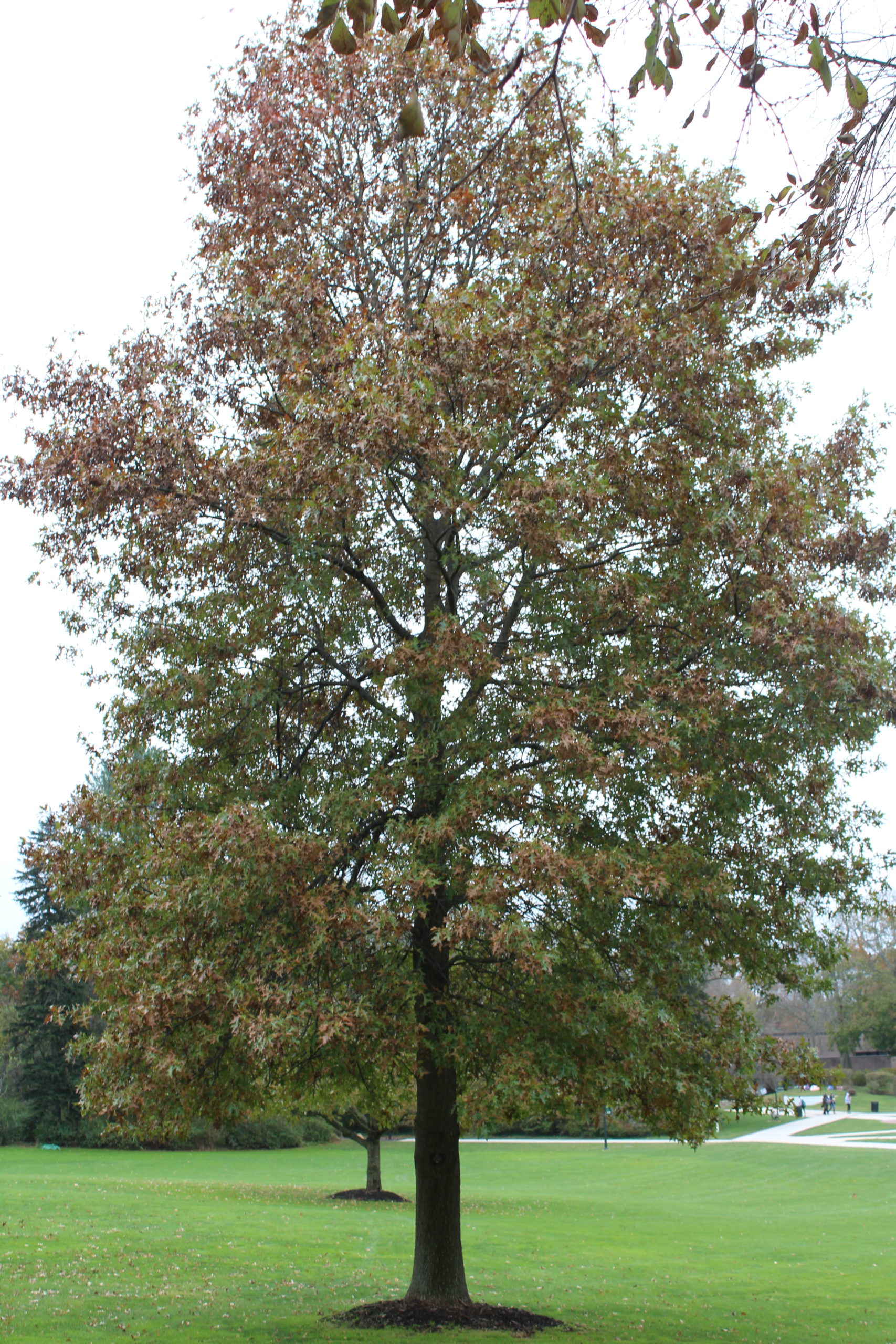By Ashley Bowden
A walk around the LIU Post campus in Brookville during the autumn or spring will showcase the colorful foliage of the numerous trees that decorate over 307 acres.
A closer look at certain tree trunks will reveal labeled plaques with the common and scientific names of trees and the region they naturally grow in. These are all part of what was once known as the Community Arboretum.
The arboretum was coordinated by Vincent Simeone (LIU Post ‘03) as part of his thesis project.
Simeone worked with ground staff to identify and properly label each plant. He also helped design and produce a brochure and walking tour map that is no longer available to students.
“I saw the little notes describing what the trees were, but I didn’t know it was a tour or anything,” Nikolas Kahl, a current LIU Post sophomore art education major, said. “I don’t think we’re losing anything [by not being told about it], but it’s nice to walk around and just happen upon them.”
Now, the arboretum consists of about 40 acres of labeled trees with over 70 different native and exotic species.
“We focused on original[ly] restoring trees that were part of the estate, and some of the more unusual trees along the walk that highlight them,” Simeone said.
Many of the trees hold horticultural or historical value, such as a 100-foot tulip tree, an 80-year-old American elm and a weeping elm planted in the 1920’s. All three of these trees stand around the campus admissions building.
“Tree Talk” was the name of a newsletter published about the arboretum each semester until the winter of 2013. It featured the newest additions to the arboretum and other environmental and horticultural news relative to the campus.
“Tree Talk was a really excellent tool to be able to publicize sustainability issues. We lost something valuable when the university discontinued that,” Scott Carlin, an LIU Post associate professor of earth and environmental science, said.
Though new trees and flowerbeds are planted every so often, students rarely take notice that the campus even has an arboretum. Approximately 50,000 bulbs were planted in the central arboretum area by Case Joosse, head groundskeeper. “I feel like it does go really unnoticed, but now that I know about that, I have a lot more respect for the entire thing,” Argyro Papathanasiou, a freshman fine arts major, said.
The arboretum contributes to campus sustainability and serves to help students connect to the natural world, according to Professor Carlin. “Trees are an incredible testament to how we as humans relate to the natural world; they are so essential to our health,” he said. “They filter water through the roots in the soil and produce oxygen; they’re incredibly important for purifying the world.”
The arboretum is no longer advertised as a guided tour, but it is maintained regularly for the benefit of students, faculty and staff.
“It’s really a wonderful thing to have because people have come to this campus for years and said how beautifully natural the whole scene is,” Kay Sato, director of the LIU Post Hutton House Lectures, said. “New York City is [close], but . . . you’ve got this wild landscape you can’t find anywhere.”
This article was originally published in the Pioneer, the award-winning student newspaper of LIU Post, www.liupostpioneer.com, and is republished here by Blank Slate Media with the permission of the Pioneer.



